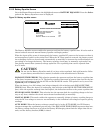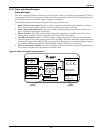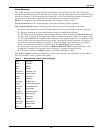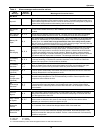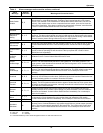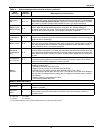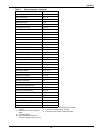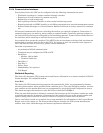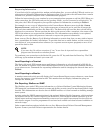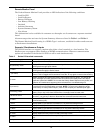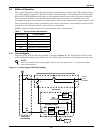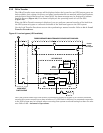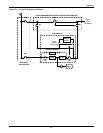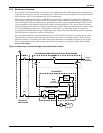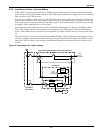
Operation
55
3.2.14 Communication Interfaces
Your Liebert Series 610 UPS can be configured with the following communication ports:
• Worldwide reporting to a remote terminal through a modem
• Reporting to a local terminal (no modem required)
• Reporting to a local monitor only
• Site reporting to Liebert SiteScan or other central monitoring system
• Reporting through an SNMP interface to a building management or network management system
• Selected alarm messages to a Liebert Remote Monitor Panel and to contact closures for customer
use
All external communication devices, including the modem, are optional equipment. Connections to
communication ports are made by wiring cables to terminal boards. Connection points are shown on
the Control Wiring Interconnect Diagram in the installation manual. Contact Liebert Global Services
for assistance when attaching an external device to your UPS system.
Any terminal that accepts the standard 7-bit ASCII codes and conforms to the data link requirements
can be used to interface with the Series 610 UPS. If a printer is used, the terminal must support it.
The UPS does not send or receive any printer control commands.
Data link requirements are:
• Asynchronous RS-232 communication
• Terminals may be configured as DTE or DCE
• Baud Rate:
• Modem: 1200 or 2400
• Terminal: 2400 only
•Data Bits: 8
•Stop Bits: 1
•Parity: None
• Handshaking: Not required
•Full Duplex
Worldwide Reporting
The Series 610 transmits UPS system status and history information to a remote terminal in RS-232
format through a PC-compatible modem.
Auto-Dial
The Series 610 UPS communication program will automatically dial a pre-programmed (customer-
selected) phone number when specified alarm conditions occur. The auto-dial phone number, an alter-
nate number and the modem baud rate are programmed by using the System Configuration screen.
The alarm messages that initiate an auto-dial call are identified in Table 4.
When the auto-dial function is initiated, automatic dial attempts to the first phone number are made
at periodic intervals for 30 minutes. If unanswered, the system rolls over to the second number and
repeats calling until connection is made or returns to first phone number after 30 minutes.
Once a connection is made to a terminal, the system transmits the information on the Present Status
Report screen, then hangs up. The Present Status Report includes the UPS system identification
number, date, time, alarm messages and metered parameter indications.




